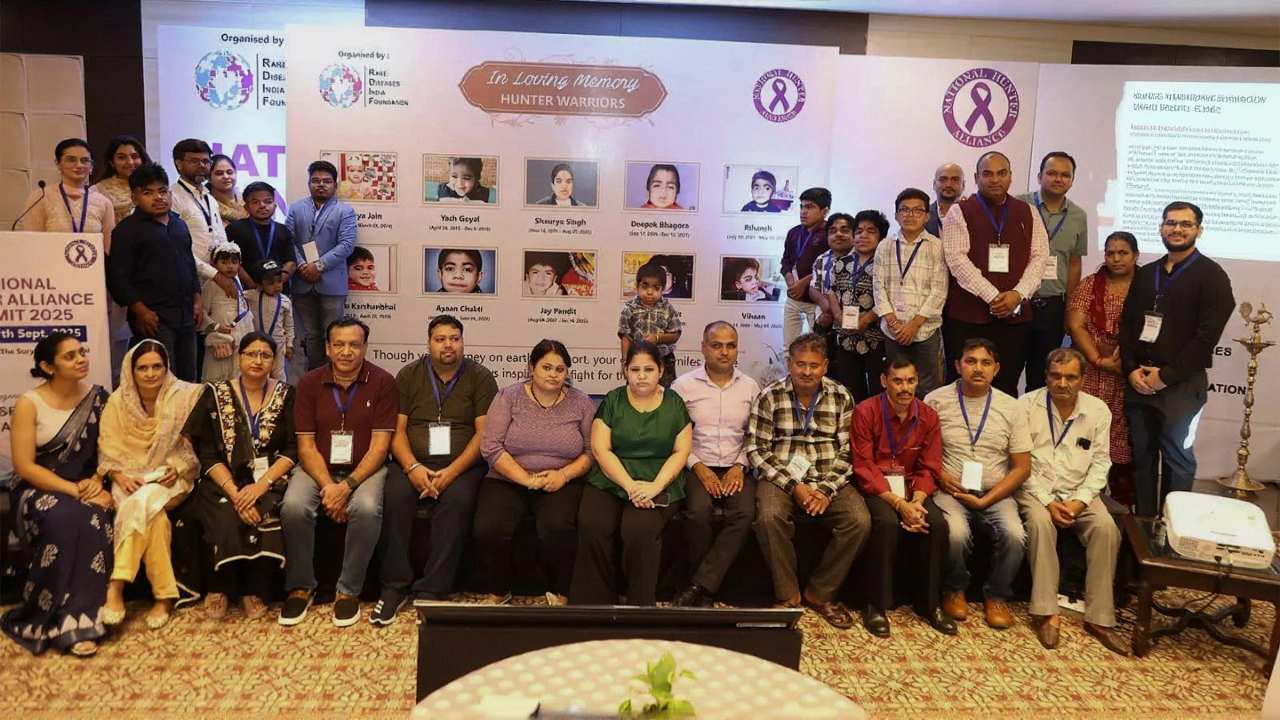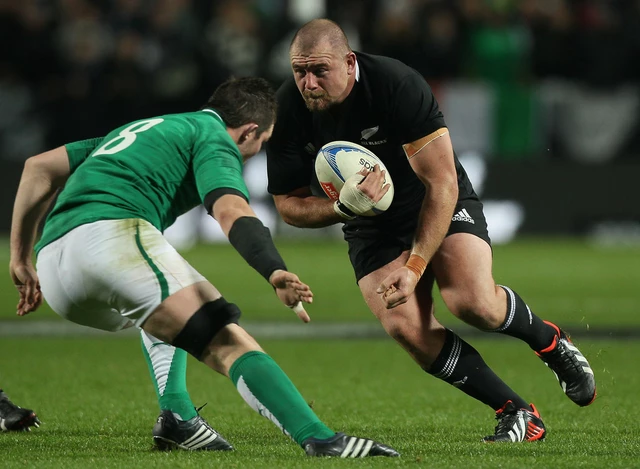On September 27, 2025, a quiet but furious crowd gathered in New Delhi—not for a rally, not for a protest, but for a funeral of sorts. The National Hunter Alliance Summit 2025 opened with a moment of silence for children who didn’t make it past their teens. One of them was 13-year-old Shaurya Singh, who died on August 20, 2025, from Hunter Syndrome, a rare genetic disorder that slowly steals motor skills, speech, and eventually life. His father, Saurabh Singh, stood before hundreds of grieving families and said, "Today, I feel disheartened." That wasn’t just grief. It was rage dressed in silence.
Policy on Paper, Crisis in Reality
The National Rare Disease Policy 2021 was supposed to be India’s lifeline. It promised up to ₹50 lakh in financial aid for families battling rare conditions like Hunter Syndrome, also known as MPS II. But here’s the twist: treatment costs for this disease alone range from ₹1.5 to ₹2 crores annually. That’s 30 to 40 times what the policy covers. Families aren’t just struggling—they’re being bankrupted. And the system knows it."If India could research and deliver a COVID vaccine in months," Saurabh Singh told the summit, "why has no progress been made in rare diseases over the last 12 years?" The question hung in the air like a verdict. While global pharmaceutical companies raced to develop gene therapies for rare disorders, India’s healthcare system remained frozen. No domestic research. No local manufacturing. No price negotiations. Just a policy that looks good in a brochure but collapses under real-world pressure.
The Invisible Wall: No Insurance, No Research
Here’s what’s missing: insurance. Not a single private insurer in India offers coverage for rare diseases. Public health schemes? They don’t count them. Even when families qualify under the NRDP, the ₹50 lakh aid is blocked by bureaucratic red tape—paperwork delays, unclear eligibility rules, and hospitals that refuse to process claims. Prof. (Dr.) Shefali Gulati, a leading hematologist at AIIMS New Delhi and member of the Central Technical Committee for Rare Diseases, confirmed: "We have the framework. We don’t have the execution. Patients are falling through the cracks because no one’s holding anyone accountable."Meanwhile, Rare Diseases India Foundation (RDIF), the group behind the summit, has documented over 200 cases in the past year where families were denied aid despite meeting all criteria. One mother in Patna sold her land to pay for enzyme replacement therapy. A father in Jaipur took a second job as a rickshaw driver. And still, the treatments keep costing more than they earn.
Personal Loss, Public Failure
Saurabh Singh didn’t just speak as an advocate. He spoke as a father who watched his son fade. Shaurya’s diagnosis came at age three. By eight, he needed a wheelchair. At 12, he stopped speaking. His last words, his mother remembers, were "I’m tired." The treatment? A weekly infusion costing ₹3.2 lakh. The government’s aid? ₹50 lakh total, spread over three years—meaning it wouldn’t even cover one year of care. By the time the paperwork cleared, Shaurya was gone."We didn’t lose him to the disease," Singh said, voice cracking. "We lost him because the system didn’t move fast enough."
Other attendees echoed this. HAV. D.K. Chansolia, a retired army officer whose daughter has Sanfilippo Syndrome, described waiting 11 months for a single approval letter. "I’ve seen war zones," he said. "This is worse. At least in war, you know who the enemy is. Here, the enemy is silence."
What’s Next? A Plea to the Supreme Court
The summit didn’t end with speeches. It ended with a formal petition—signed by 89 families, 17 doctors, and five NGOs—addressed to the Government of India and the Hon'ble Supreme Court. Their demands are simple: raise the financial cap to at least ₹1.5 crores per patient per year, mandate insurance coverage for rare diseases, fund domestic research, and create a fast-track approval system with penalties for delays.Experts warn that without change, India will become a graveyard for rare disease patients—not from lack of science, but from lack of will. The technology exists. The drugs are available. The problem is structural. And it’s killing children.
Why This Matters Beyond Hunter Syndrome
Hunter Syndrome affects only about 1 in 100,000 births. But there are over 7,000 rare diseases. Collectively, they impact 8–10% of India’s population. That’s 100 million people. And right now, nearly all of them are invisible to the healthcare system.Compare this to cancer. India spends ₹1,200 crore annually on cancer care subsidies. For rare diseases? ₹22 crore. That’s less than 2% of what’s spent on cancer. And cancer affects 1 in 8 Indians. Rare diseases affect 1 in 10. Yet the funding ratio is 55:1.
"We’re not asking for miracles," said Dr. Gulati. "We’re asking for the same logic that applies to every other illness: that if you’re sick, you get help. Not if you’re rich enough to afford it."
Frequently Asked Questions
Why isn’t the ₹50 lakh aid under the National Rare Disease Policy 2021 working?
The ₹50 lakh cap is outdated—treatment for Hunter Syndrome alone costs ₹1.5–2 crores annually. Even when families qualify, bureaucratic delays, lack of hospital participation, and no insurance coverage make the aid inaccessible. Many cases are rejected due to unclear documentation rules, and no agency enforces compliance.
Are there any treatments available in India for Hunter Syndrome?
Yes—enzyme replacement therapy and hematopoietic stem cell transplants are available at select centers like AIIMS and Apollo Hospitals. But they’re prohibitively expensive, and no domestic production exists. All drugs are imported, with no price controls. The government hasn’t negotiated bulk rates or supported local manufacturing.
Why hasn’t India developed research or therapies for rare diseases?
Unlike COVID-19, rare diseases lack political urgency and commercial incentive. Pharmaceutical companies don’t invest because patient pools are small. The government hasn’t created funding pathways or public-private partnerships. As a result, India imports 100% of rare disease treatments at full global prices.
What role does the Central Technical Committee for Rare Diseases play?
The Central Technical Committee for Rare Diseases advises the Ministry of Health on diagnostics, treatment protocols, and policy design. But it has no enforcement power. It doesn’t manage funding, approve hospitals, or monitor implementation. It’s a policy advisory body without authority—a skeleton without a spine.
How are families coping without government support?
Many sell homes, take loans, or beg on social media. Some travel abroad to countries like the U.S. or Germany where treatments are subsidized. Others abandon treatment entirely. RDIF estimates over 60% of eligible families give up within the first year due to financial collapse. Children die not because the medicine isn’t there—but because the system won’t let them reach it.
What’s the timeline for policy reform?
There’s no official timeline. The National Rare Disease Policy 2021 was announced four years ago. Since then, no major revisions have been made. The Supreme Court petition filed after the summit is now pending. Advocates hope for a hearing by early 2026, but without public pressure, change is unlikely. The clock is ticking for children who don’t have years to wait.



